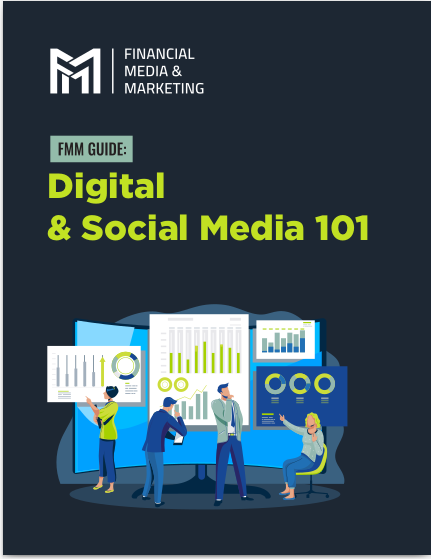Key Takeaways
-
Social media in 2025 is a strategic platform for building professional visibility, not just a place to post updates.
-
You can generate long-term credibility and attract opportunities by approaching your content, timing, and engagement like a visibility engine.
The Changing Role of Social Media in Professional Life
Social media has evolved dramatically over the past decade. What used to be a platform for casual updates and photo sharing is now a core visibility tool for professionals across industries. In 2025, your online presence is often your first impression—and sometimes your only one. That means how you appear on LinkedIn, Twitter (X), Instagram, and even emerging platforms can impact your credibility, networking opportunities, and career progression.
Today, recruiters, clients, collaborators, and industry peers evaluate your authority based on what you post, who engages with you, and how consistent your messaging is. If you’re not treating social media as part of your visibility strategy, you’re likely missing out on potential leads, partnerships, and recognition.
Strategic Visibility Starts With a Purpose
Visibility isn’t just about being seen—it’s about being seen for the right things. To make social media work for you, you need to define your professional narrative first. Ask yourself:
-
What do I want to be known for?
-
Which audience should see my content?
-
What kind of outcomes am I hoping to attract—clients, speaking gigs, job offers, or thought leadership?
Once you answer these questions, your content plan becomes intentional. Whether it’s sharing expert opinions, posting original insights, or participating in niche conversations, every post supports a broader professional aim.
Mastering the Content Types That Drive Authority
In 2025, content diversity is essential for building credibility. Different formats serve different purposes. Here’s how you can use them effectively:
Written Posts
-
Use short-form and long-form posts to share your perspective on industry developments.
-
Break down complex topics into digestible ideas to demonstrate your expertise.
Visual Content
-
Create infographics, charts, or diagrams to illustrate key points visually.
-
Use branded templates to maintain consistency and recognizability.
Video Content
-
Short videos under 90 seconds perform well across platforms. Use these for educational snippets or personal insights.
-
Longer videos (2–5 minutes) can be used for deep dives or mini-explainers.
Live Content and Panels
-
Host Q&A sessions, participate in live discussions, or join virtual panels.
-
This content signals real-time expertise and gives you a platform to be reactive to current events.
Posting Frequency and Timing: Less Random, More Rhythm
A sporadic presence won’t build visibility. You need rhythm.
-
Weekly baseline: Posting at least twice a week keeps you on your audience’s radar.
-
Time zones matter: Post when your audience is most active. For professionals, this is often 8–10 a.m. and 4–6 p.m. local time.
-
Platform behaviors differ: Instagram may reward daily Stories, while LinkedIn algorithms favor consistent week-over-week activity.
If you’re stretched for time, you can schedule posts a month in advance using content calendars or automation tools—just remember to stay responsive to engagement.
Engagement Is a Two-Way Street
Visibility isn’t just about output; it’s also about interaction. Platforms reward engagement—so if you’re ignoring comments, not responding to DMs, or failing to engage with others’ posts, your reach will shrink.
-
Reply to comments within 24 hours to keep threads active.
-
Engage with similar professionals by liking and commenting on their content.
-
Use meaningful tags and hashtags to join and amplify relevant discussions.
In 2025, community-driven visibility is more powerful than algorithmic visibility alone. People notice when you consistently support others—it positions you as a collaborator, not just a broadcaster.
Build Thought Leadership With a 90-Day Strategy
Instead of trying to post randomly or reactively, build a 90-day plan. This helps you:
-
Define clear content pillars (e.g., industry trends, lessons learned, success frameworks).
-
Map out a weekly cadence (e.g., one educational post, one engagement-driven question, one behind-the-scenes or personal insight).
-
Analyze what worked every 30 days and optimize accordingly.
Visibility isn’t won overnight. A 3-month commitment lets you build reputation in layers, with enough data to know what resonates.
Invest in Credibility Markers
To truly position yourself as a leader in your space, you need more than content—you need credibility markers. These include:
-
Verified profiles where applicable.
-
Media mentions and features shared directly on your feeds.
-
Endorsements and testimonials from clients or peers.
-
Certifications or awards visualized in carousel or video format.
In 2025, audiences are increasingly skeptical. Proof is power. When you showcase these signals, you reduce friction in your authority-building efforts.
Hashtags, Keywords, and Searchability
Professional visibility now lives at the intersection of SEO and social. Hashtags and keywords improve the discoverability of your content, especially on platforms with search-driven user behavior.
-
Use 3–5 hashtags per post, mixing trending tags with niche-specific ones.
-
Repeat relevant keywords across post captions, image descriptions, and alt text.
-
Ensure your profile bio includes target keywords so you show up in search results.
Remember, search optimization isn’t just for websites anymore—it’s how people find thought leaders in 2025.
Managing Your Brand Across Multiple Platforms
While it’s tempting to copy-paste content across every platform, that strategy dilutes your impact. Each channel has its own language and rhythm.
-
LinkedIn: Best for articles, professional commentary, and career updates.
-
Instagram: Visual storytelling, behind-the-scenes content, and lifestyle insights.
-
Twitter (X): Snappy insights, breaking news reactions, and conversation threads.
-
YouTube or TikTok: In-depth explainers and rapid, digestible thought pieces.
Your tone should remain consistent, but the format should flex to suit the platform’s strengths. You don’t need to be everywhere—just where your audience actually spends time.
Cost and Time Investment in 2025
In 2025, the professional use of social media requires budget and bandwidth, but it’s not out of reach.
-
Time: You can begin with a 4-hour-per-week commitment—2 hours to create, 2 hours to engage.
-
Budget: If outsourcing design or editing, expect general costs ranging from $200–$800/month depending on scope.
If you’re doing it yourself, use design tools, templates, and scheduling platforms to save time. The return on visibility is worth the upfront effort.
Pitfalls to Avoid When Building Social Media Visibility
-
Over-promotion: Constant self-promotion without value will repel your audience.
-
Inconsistent posting: Sporadic posts make it hard for your audience to form expectations.
-
Neglecting interaction: One-sided communication leads to weak visibility.
-
Off-brand content: Posting unrelated content confuses your professional narrative.
Visibility is about clarity. Stay aligned with your goals, and always ask: “Does this post help me be known for what I want to be known for?”
Social Media as Your Professional Billboard
In 2025, social media is no longer optional for professionals who want to be seen, trusted, and sought after. It’s your billboard, your proof of credibility, and your platform for shaping perception.
By aligning purpose with content, embracing consistency, and nurturing engagement, you can turn your social presence into a visibility machine. Don’t let your expertise go unnoticed—start showing up where it counts.










